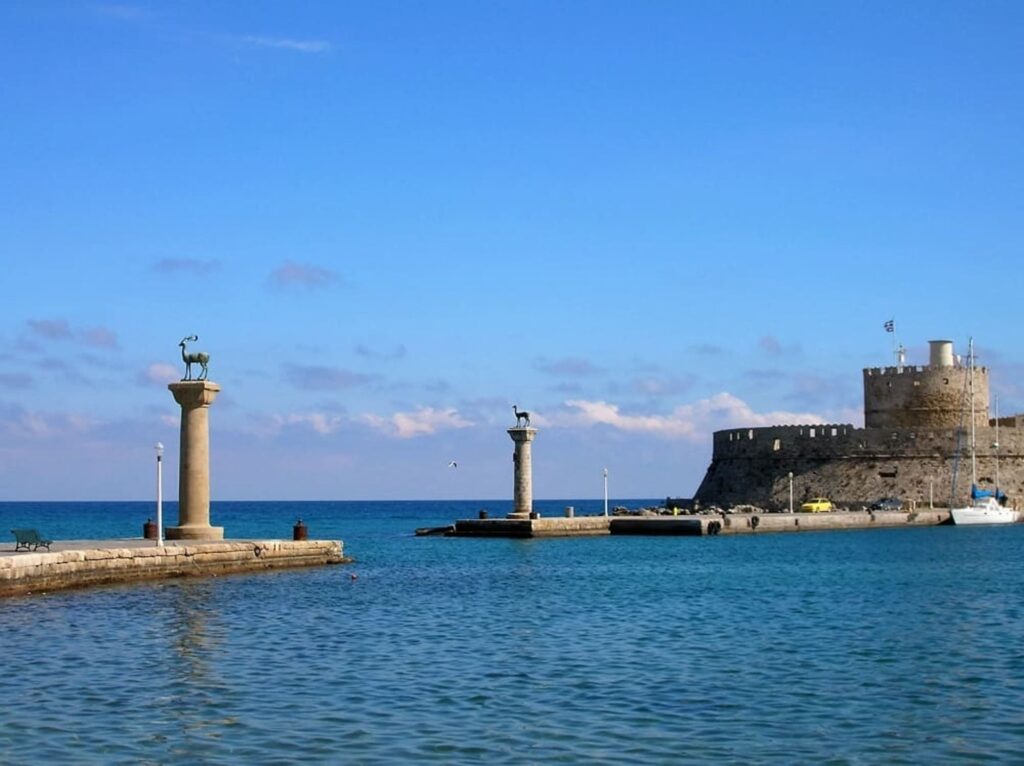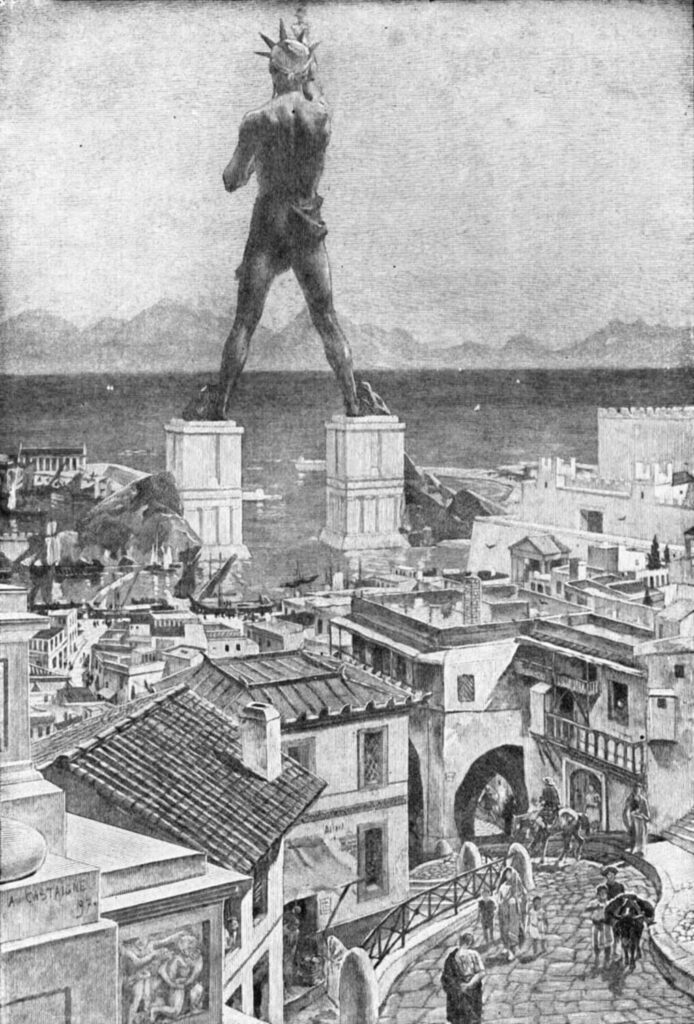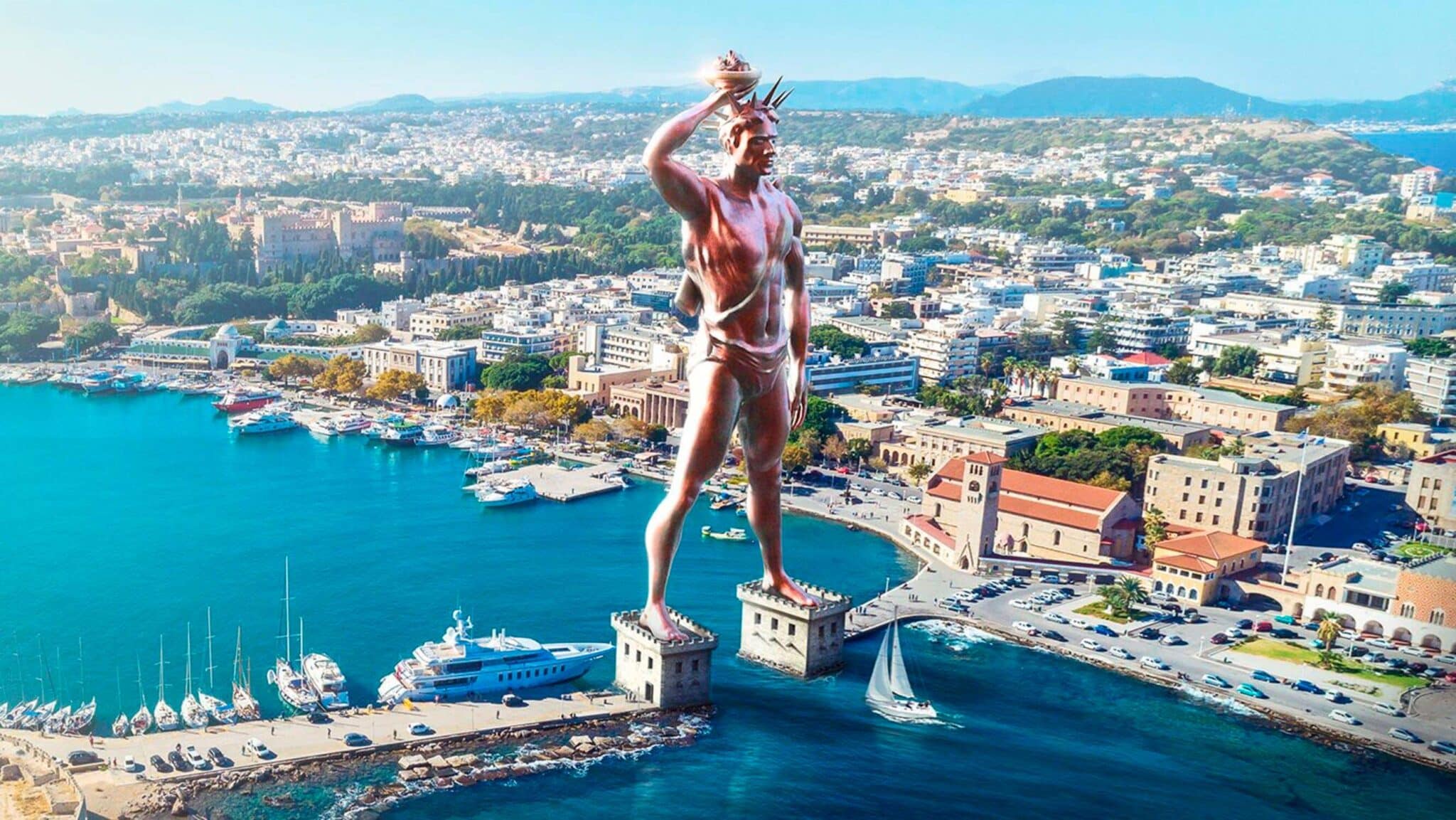What was the Colossus of Rhodes
The Colossus of Rhodes was a bronze statue erected in the city of Rhodes, Greece, in the 3rd century BC. Dedicated to the god Helios, it symbolized the victory of the Rhodians over the siege of Demetrius Poliorcetes. It was recognized as one of the Seven Wonders of the Ancient World.
Today, it is still remembered as a true masterpiece of engineering and artistic bronze casting. Its exact location remains a matter of debate, although tradition places the statue at the entrance to the port of Rhodes. Today, sculptures of deer stand in this spot, commemorating the ancient wonder.

The history and significance of the Colossus of Rhodes
The Colossus was not just a sculpture: it was a representation of the pride and faith of an entire people. The significance of the Colossus of Rhodes was linked to the freedom and strength of the city, which became a naval and commercial power in the Mediterranean.
The idea was conceived around 305 BC, after resisting the siege. It was decided to commemorate the triumph by building a monumental work of art in bronze. With this, the Rhodians wanted to record their greatness and pay tribute to Helios, the sun god.
How it was built step by step
The project was led by Cares of Lindos, an apprentice of Lysippos, one of the most famous Greek sculptors. Cares worked on the project for over a decade, applying technical innovations that marked a turning point in modern bronze sculpture.
The construction of this bronze sculpture took 12 years, between 292 and 280 BC, and represented an unprecedented technical challenge. To erect this bronze statue, enormous quantities of bronze plates were melted down, obtained mainly from enemy weapons after the Rhodians’ victory.
The material was molded and adapted to an internal iron frame reinforced with stones to support the weight of the bronze sculpture. The assembly of the work was equally innovative. Craftsmen and foundry workers worked in sections, using earthen ramps surrounding the figure that allowed each part to be raised as the structure grew.

In this way, the Colossus finally reached its imposing height of over thirty meters, becoming a true masterpiece of Hellenic engineering. Today, it is considered a historical benchmark compared to large bronze casting projects carried out in the present day.
At thirty-three meters tall, it became one of the tallest sculptures ever built in ancient times. To put it in context, it was similar in size to the current Statue of Liberty without its pedestal.
What did the Colossus of Rhodes represent
The fall of the monumental sculptureThe Colossus represented the god Helios, probably holding a torch or spear. It was a symbol of the Rhodians’ victory, but also of their faith in divine protection and the city’s naval power. Its function went beyond aesthetics; it was a political and spiritual statement. A commemorative work of art that marked the entrance to the eastern Mediterranean.
The fall of the monumental sculpture
In 226 BC, an earthquake shook the Colossus of Rhodes to its foundations. The statue broke at the knees and collapsed to the ground, where it remained for more than 900 years. According to Pliny the Elder, even after it had fallen, the pieces were so imposing that few men could wrap their arms around the remains of the fingers.
The Rhodians consulted the Oracle of Delphi, who advised against rebuilding it, so the statue remained in ruins until the Middle Ages, when it was looted. When the Arabs invaded the island in the 7th century, the remains were sold as scrap metal. It is believed that the metal was transported on hundreds of camels. As a result, nothing tangible remains of the Colossus today, beyond written and artistic references.
The ruins, their legacy, and influence on art
Although its remains have disappeared, the legacy of the Colossus of Rhodes lives on. Its grandeur inspired today’s monumental sculptures: from the Statue of Liberty to urban bronze sculptures that decorate public spaces around the world.
Furthermore, the Colossus is a reminder of innovation in the casting of custom sculptures and the use of bronze and iron. Its influence on art transcends centuries, serving as a model for those seeking to understand how to create a monumental sculpture capable of enduring in the collective memory.
Currently, there are initiatives seeking to reconstruct the Colossus of Rhodes in its original location, Mandraki Harbor. The idea is to restore a cultural and tourist symbol to the island, although the projects face technical and financial challenges. It remains a masterpiece of Greek sculpture and an inspiration for new works of art and commemorative bronze sculptures.
The Colossus of Rhodes and monumental sculpture
At Capa Esculturas, the legacy left by this sculpture is reflected in our bronze sculptures, monumental works of art, and bronze casting projects that transform artists’ visions.
The tradition of monumental Greek sculpture lives on in every contemporary bronze sculpture that decorates public spaces. Each personalized work of art becomes a symbol of identity, and each custom-made sculpture combines innovation with artistic heritage.
Would you like to see other monumental sculptures? Here is our latest large-scale monumental sculpture project.

